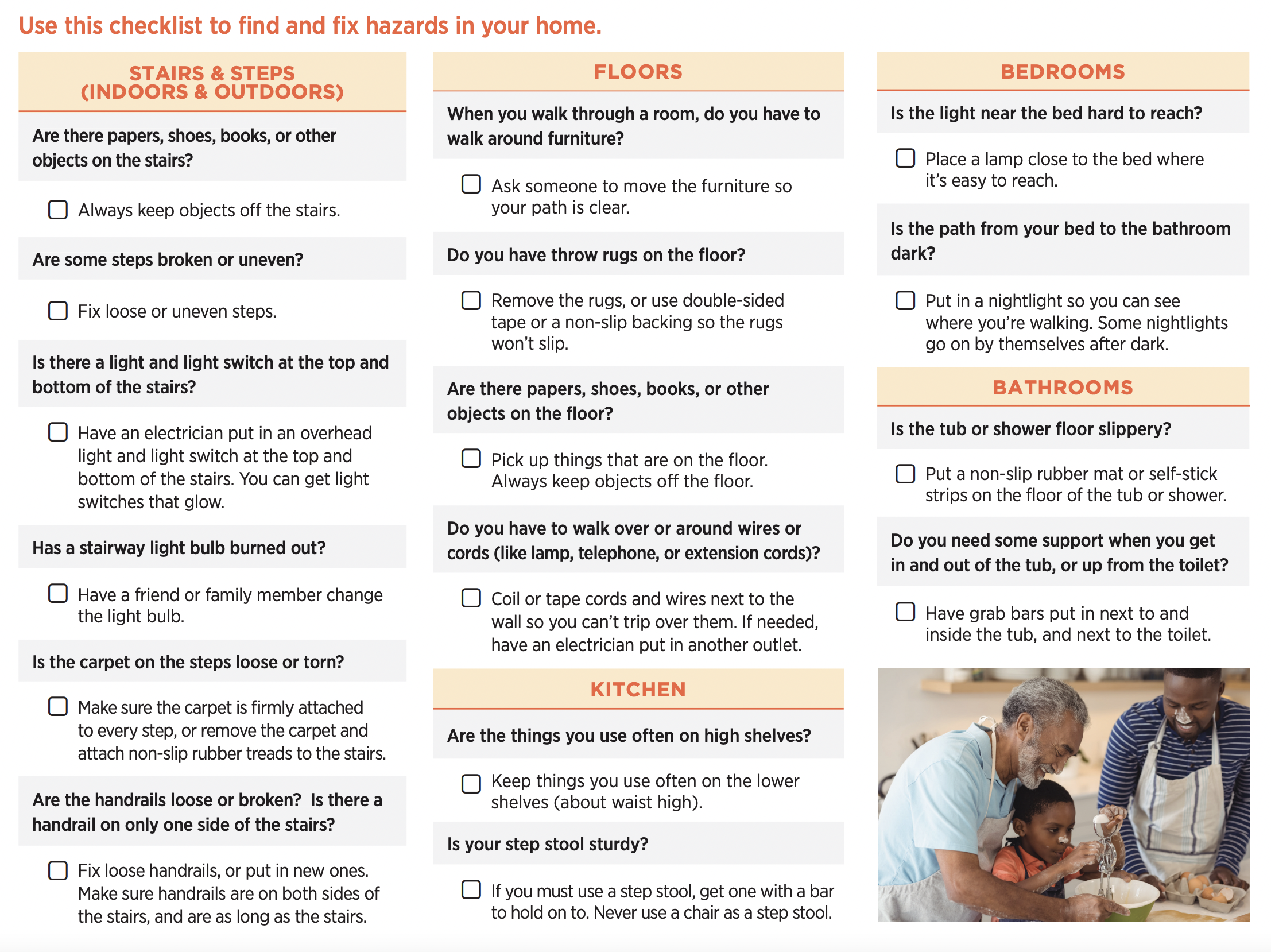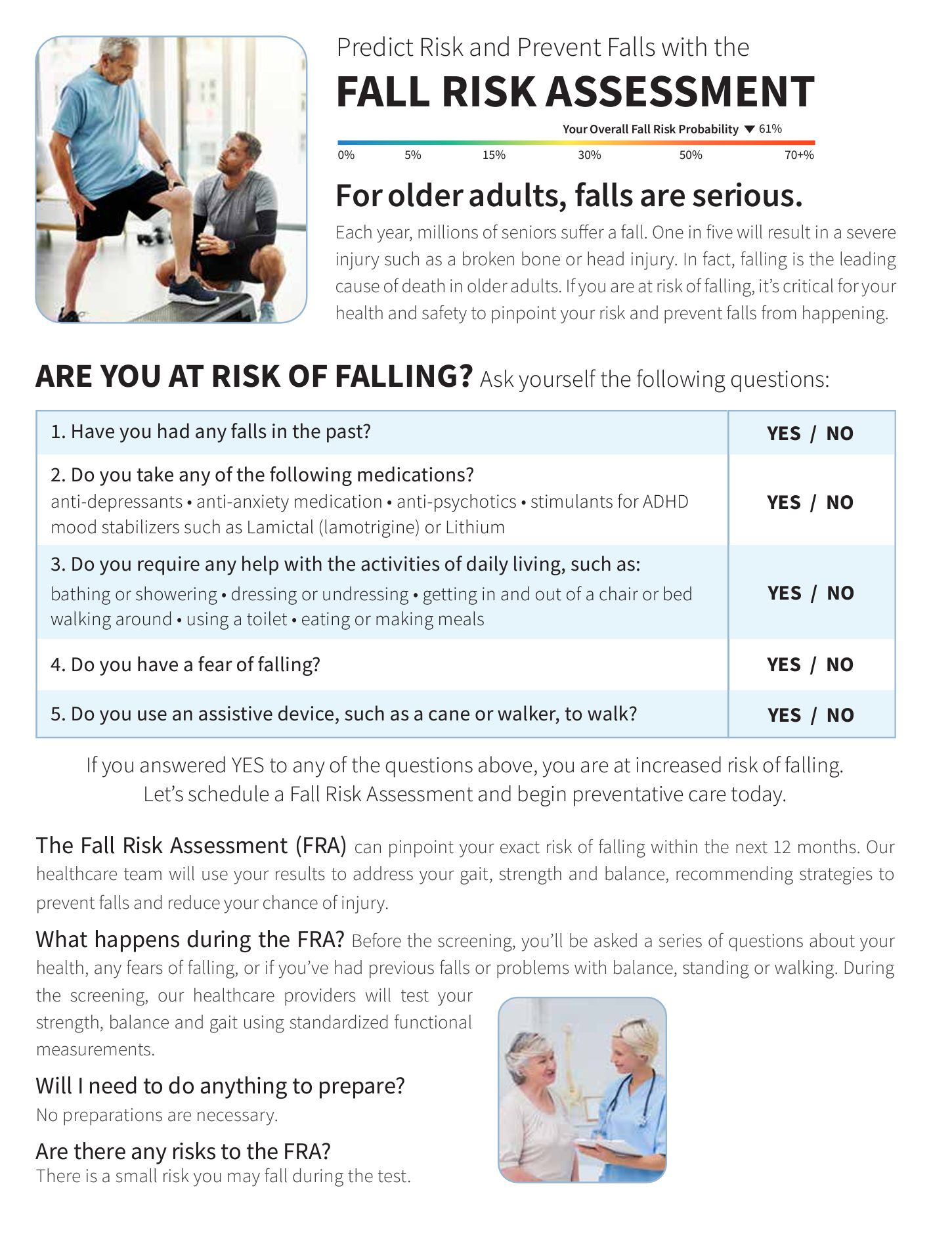Little Known Facts About Dementia Fall Risk.
Table of ContentsThe 20-Second Trick For Dementia Fall RiskThe Ultimate Guide To Dementia Fall RiskTop Guidelines Of Dementia Fall RiskWhat Does Dementia Fall Risk Mean?
A loss danger assessment checks to see exactly how most likely it is that you will drop. The evaluation generally includes: This consists of a series of concerns concerning your general wellness and if you have actually had previous falls or issues with balance, standing, and/or strolling.Interventions are suggestions that might minimize your danger of falling. STEADI includes three steps: you for your risk of falling for your risk elements that can be enhanced to try to avoid falls (for example, balance problems, impaired vision) to minimize your danger of falling by utilizing efficient techniques (for example, offering education and resources), you may be asked numerous concerns consisting of: Have you dropped in the previous year? Are you fretted about falling?
If it takes you 12 secs or even more, it may suggest you are at greater risk for a loss. This examination checks stamina and balance.
The positions will get harder as you go. Stand with your feet side-by-side. Move one foot halfway onward, so the instep is touching the big toe of your various other foot. Move one foot fully before the other, so the toes are touching the heel of your various other foot.
Dementia Fall Risk for Beginners
A lot of drops occur as a result of several adding variables; therefore, handling the danger of dropping starts with recognizing the factors that add to fall risk - Dementia Fall Risk. A few of the most appropriate danger variables consist of: Background of previous fallsChronic clinical conditionsAcute illnessImpaired gait and balance, lower extremity weaknessCognitive impairmentChanges in visionCertain high-risk medications and polypharmacyEnvironmental elements can likewise enhance the danger for drops, including: Insufficient lightingUneven or harmed flooringWet or unsafe floorsMissing or harmed hand rails and order barsDamaged or poorly equipped tools, such as beds, mobility devices, or walkersImproper use assistive devicesInadequate guidance of individuals staying in the NF, consisting of those that display aggressive behaviorsA successful fall threat monitoring program calls for an extensive scientific evaluation, with input from all members of the interdisciplinary group

The treatment plan should also consist of treatments that are system-based, such as those that advertise a risk-free environment (appropriate lights, hand rails, get hold of bars, etc). The effectiveness of the interventions should be reviewed occasionally, and the read review treatment plan revised as needed to mirror modifications in the fall threat analysis. Carrying out an autumn risk monitoring system utilizing evidence-based best technique can minimize the prevalence of drops in the NF, while limiting the potential for fall-related injuries.
6 Simple Techniques For Dementia Fall Risk
The AGS/BGS standard suggests evaluating all adults matured 65 years and older for fall danger annually. This screening consists of asking clients whether they have actually fallen 2 or even more times in the past year or looked for clinical interest for an autumn, or, if they have actually not fallen, whether they feel unsteady when strolling.
Individuals who have dropped as soon as without injury must have their equilibrium and gait examined; those with stride or equilibrium abnormalities must obtain additional assessment. A history of 1 autumn without injury and without stride or equilibrium problems does not require further analysis past continued annual fall danger testing. Dementia Fall Risk. A loss risk evaluation is needed as part of the Welcome to Medicare assessment

The Ultimate Guide To Dementia Fall Risk
Recording a falls history is one of the top quality signs for fall avoidance and administration. Psychoactive drugs in specific are independent predictors of falls.
Postural hypotension can typically be reduced by reducing the dose of blood pressurelowering medicines and/or quiting medications that have orthostatic hypotension as a negative effects. Use above-the-knee assistance hose pipe and copulating the head of the bed raised may likewise reduce over at this website postural decreases in high blood pressure. The advisable aspects of a fall-focused physical exam are shown in Box 1.

A Pull time higher than or equivalent to 12 secs recommends high autumn threat. Being incapable to stand up from a chair of knee elevation without making use of one's arms shows increased autumn danger.